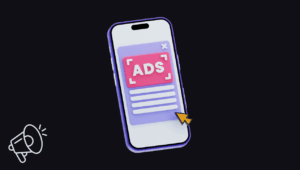Creating an online course is a powerful way to scale your knowledge and generate recurring income. But even the most insightful course can fall flat if it launches to an empty room. Success doesn’t just depend on content, it depends on how you position, promote, and present it to the right audience. In this article, you’ll learn how to launch your online course with impact, with essential marketing steps for success.
Launching with impact requires strategy, not just enthusiasm. From pre-launch buzz to conversion-focused email sequences, marketing plays a defining role in whether your course sells—or sits.
This guide outlines the essential marketing steps to launch your online course with confidence, visibility, and results.
1. Validate Your Course Concept Before You Build It
You can’t market something nobody wants. Before writing a single lesson or recording your first video, confirm there’s demand. This ensures your marketing efforts won’t fall on deaf ears.
How to Validate: Course Essential Marketing Steps
- Survey your audience via email or social media
- Pre-sell a limited number of course seats to test interest
- Post teaser content and track engagement (e.g. Instagram Reels or blog posts)
- Research forums, Reddit threads, and Facebook groups for questions around your topic
- Use Google Trends and SEO tools to analyze keyword demand
Validation not only saves time, it provides the language your audience uses to describe their problems—perfect for crafting your marketing copy later.
2. Build a Pre-Launch List (Your Email List Is Your Launch Engine)
Relying solely on social media is risky. Algorithms change. Reach fluctuates. That’s why your email list should be the core of your course marketing strategy.
Create a lead magnet that aligns with your course topic—a checklist, webinar, mini-guide, or quiz. Use it to build a list of warm leads before your course is even complete.
Best Practices:
- Use an email platform like ConvertKit, MailerLite, or Beehiiv
- Segment new subscribers based on interests or quiz results
- Send value-packed pre-launch emails to build anticipation
- Use countdown timers and early access offers to drive urgency
- Highlight behind-the-scenes progress and involve your audience in decisions
A pre-launch list doesn’t need to be huge, it needs to be engaged.
3. Create a Landing Page That Converts: Launch Online Course Marketing
Your landing page is where curiosity turns into commitment. It should communicate not just what your course offers, but what problem it solves and how it transforms the learner.
Key Elements to Include: Course Essential Marketing Steps
- Clear, benefit-focused headline
- Description of the transformation or outcome (not just features)
- Instructor bio that builds credibility
- Course breakdown (modules, duration, bonuses)
- Testimonials or early feedback (if available)
- FAQ section to reduce hesitation
- Strong CTA with pricing tiers or early-bird offer
Avoid clutter. Focus on clarity, emotional connection, and conversion. Tools like Kajabi, Teachable, ThriveCart, and Podia offer customizable landing page templates if you’re not hiring a designer.
4. Leverage Content Marketing to Educate and Attract
Content marketing is a magnet. Not a megaphone. Use it to demonstrate your expertise, build trust, and solve related micro-problems your audience faces before buying.
Content Ideas to Support Your Launch: Online Course Marketing
- Blog posts that address related pain points (“How to Create Your First Sales Funnel in 3 Steps”)
- Educational YouTube videos or IG Lives that preview parts of the course
- Carousel posts with lessons or stats that align with course content
- Finally, podcast guest appearances that expose you to aligned audiences
Use each piece of content to guide users to your email list or course waitlist. Add value first, then offer the next step.
5. Map Out Your Launch Email Sequence: Launch Online Course Marketing
Email marketing remains the most effective channel for digital course sales. It allows for personalized messaging, segmented offers, and storytelling that builds emotional momentum.
Your launch sequence should follow a structure designed to warm, engage, and convert.
Sample Launch Email Timeline:
| Day | Email Type | Objective |
|---|---|---|
| -7 | Course announcement | Generate excitement and curiosity |
| -5 | Personal story or transformation | Connect emotionally and highlight outcome |
| -3 | Behind-the-scenes of course build | Build trust and authority |
| -2 | Course content preview | Demonstrate value and what’s inside |
| 0 | Cart open | Announce early-bird pricing or limited spots |
| +1 | Social proof/testimonials | Reinforce quality with real-world success |
| +3 | FAQ and objections addressed | Handle hesitations before close |
| +5 | Last call reminder | Trigger urgency before deadline |
Make sure each email links directly to your course landing page and reinforces the benefits.
6. Use Scarcity Without Manipulation
Scarcity works, but only if it’s authentic. Limited-time bonuses, seat caps, or pricing deadlines add urgency to your offer and encourage action.
Ways to Use Scarcity Ethically:
- Firstly, early-bird discount that ends on a set date
- Secondly, limited seats for live coaching or Q&A sessions
- Bonus resources available only for first buyers
- Finally, access to private community for those who enroll within 72 hours
Be honest. If you say the price increases after launch week, follow through. Building trust is more valuable than a single sale.
7. Turn Your Existing Audience Into Launch Ambassadors
You don’t need a massive following to generate buzz. You need engaged people who care about your content—and want others to benefit too.
Tactics to Amplify Your Launch: Online Course Marketing
- Create shareable graphics for social and email
- Invite followers to share a launch post in exchange for a bonus
- Use branded hashtags for launch week
- Ask superfans or clients to provide a testimonial or case study
- Finally, offer an affiliate program to reward referrals
People support launches they feel part of. Involve them and they’ll help you spread the word.
8. Collect Feedback and Optimize
Your launch doesn’t end at checkout. What happens after the sale is just as important for long-term success. Capture data, learn from your audience, and refine.
What to Track:
- Open and click-through rates from launch emails
- Conversion rate on the landing page
- Drop-off points in the checkout process
- Questions people asked before buying (hint: those become objections to answer next time)
- Buyer feedback on what motivated their purchase
Use this insight to improve future launches and turn your course into an evergreen product that sells long after your initial campaign.
Launch Strategy Breakdown at a Glance: Launch Online Course Marketing
| Phase | Step | Purpose |
|---|---|---|
| Pre-Launch | Validate idea | Confirm demand and gather messaging cues |
| Audience Building | Grow email list with aligned lead magnet | Build a warm audience ready to buy |
| Page Creation | Build landing page with persuasive copy | Convert interest into sales |
| Content Strategy | Publish blog/videos that align with course | Drive organic traffic and authority |
| Launch Campaign | Send structured email sequence | Guide leads through the buyer journey |
| Scarcity & Urgency | Use ethical deadlines and limited bonuses | Motivate timely action |
| Promotion | Activate social shares and referrals | Expand reach through existing followers |
| Optimization | Gather data and feedback | Improve future launches and retention |
Launch Online Course Marketing Final Thoughts
Launching your course successfully isn’t about luck, it’s about strategy. A great product won’t sell itself. But a thoughtfully executed marketing plan ensures your message reaches the right people at the right time.
Start before you’re ready. Build your list, refine your positioning, and serve your audience through valuable content. When launch day arrives, you won’t just be selling. You’ll be delivering a solution your audience already trusts.
You’ve invested time in building something valuable. Now it’s time to launch it with impact.








